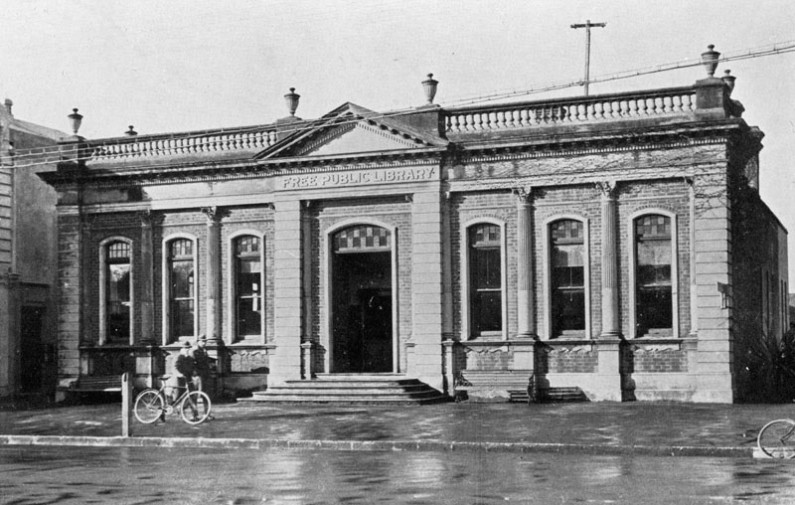Looking back at libraries in Kirikiriroa/Hamilton - Part 5
Carnegie Hamilton Public Library

Hamilton's Carnegie Library c. 1925
2023 marked the 30th year that the Central Library has been operating from our current location in Garden Place. We thought it would be interesting to look back at the history of our town and city libraries.
Andrew Carnegie, a Scottish-born American businessman and philanthropist, was passionate about the creation of free and open access public libraries. Starting in communities which he had a personal connection to, he then expanded his library programme at home and abroad. During this time libraries, or institutions, were generally only available for those who could afford the subscriptions to them. Carnegie's libraries however had to remain free for everyone, which in practice was hard for many communities.
The Borough Council and people of Hamilton were happy when ‘Carnegie grants’ became available. They decided to apply for a grant to build Hamilton's third official public library. On the condition that library remained free for all, Carnegie agreed to donate 2000 POUNDS for a library to be built and the council committed to contributing 100 pounds annually for its upkeep. The library was still subscription based however and an annual fee from borrowers was required.
A petition saw the residents fabour building the new library closer to those living in Hamilton. Mayor James Bond however ignored this and ordered the construction to take place on Victoria Street, opposite Garden Place. It opened in 1908 by Premier Sir Joseph Ward. To enter the building patrols had to enter through a revolving door - "a novel and exciting piece of modern machinery." (Astride the River pg 146). It had a coal fire and large newspaper room. By 1914 the book room was open from 10am till 9.30pm, every day except Sundays. The newspaper room was open every day all year round. Out of the 598 books held, 497 were ficition.
From 1906 - 1913 Hamilton's population grew from 2150 to 3710. In contrast, from 1906 - 1912 saw only 94 additional patrons joined up. Two staff members were employed, the Librarian and their assistant. Librarian Miss Carey resigned in 1912 and the committee originally intended to hire a married man as her replacement, with their intention that the wife would do the cleaning. The lack of male applicants however saw the library assistant, Miss Gibson, be promoted. The library stayed open throughout World War One but closed for a week in January 1919 due to the influenza epidemic. During the Great Depression the council had to reduce its funding from 650 POUNDS to 450 POUNDS. Jobs were scarce so when the Assistant Librarian became available 63 people applied.
Frankton Library ran it's own separate library but they realised they were wasting library resouces in doing this and they amalgamated the two. The libraries lagged behind other cultural institutions in Hamilton and the library committee decided one way to improve was the ditch subscriptions, making it truly free for the public. By the 1950s Hamilton's library service had fallen well behind the rest of the country. Many residents how thought books were a waste of council money. The educational and information sharing benefits of a library weren't appreciated and they just saw it as a source of recreational reading.Those in charge did not see the library as a high priority when the city had other pressing needs, including new roads and an adequate sewerage system.
By July 1960 the library was moved into a wing of the councils new administration building on Worley Street and the old library site was sold.
Thanks to Bruce Ringer for information from his book, "Hamilton Public Library a Brief History" HAM 027.49334 RING and the National Library website "Papers Past" https://paperspast.natlib.govt.nz/newspapers
